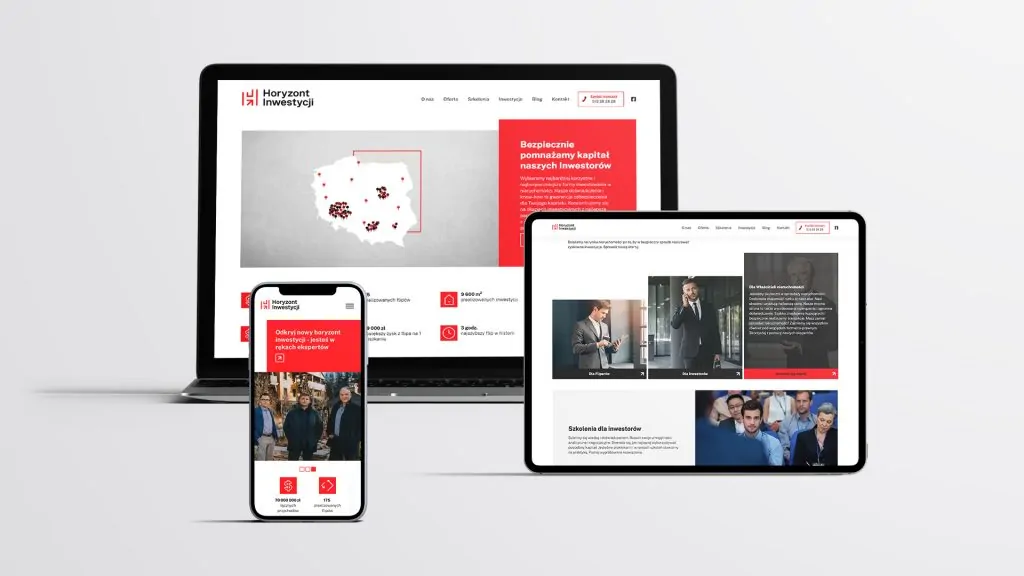Employer branding should be an important part of any company's strategy. According to research conducted by LinkedIn, as many as 75% candidates check the reputation of a potential employer before applying. This shows that building a strong employer brand is not just a matter of image, but above all a strategic investment in the future of the organisation!
- What is an employer brand?
- How to build a strong employer brand?
- Tools and activities to support employer branding
- Benefits of employer branding
- Challenges and mistakes in employer branding
- What elements influence the employer brand?
- Who is responsible for employer branding within the company?
- How to measure the effectiveness of employer branding?

What is an employer brand?
An employer brand is a comprehensive image of a company as a workplace, shaped in the eyes of current and potential employees. It encompasses a set of attributes and values that define an organisation's identity as an employer. It also goes far beyond standard job offers or benefit packages. A strong employer brand is based on authenticity and consistency. It reflects the actual organisational culture, values and mission of the company. It is not just a superficial image created for recruitment purposes, but a deeply rooted identity that permeates every aspect of the organisation.
Employer brand elements include:
- Opportunities for professional and personal development
- Innovation and approach to change
- Corporate social responsibility

The impact of a strong employer brand on a company's competitiveness is multidimensional. It attracts the best candidates and helps retain the most valuable employees. Companies with a recognisable employer brand often record lower recruitment costs and a shorter time to fill positions.
How to build a strong employer brand?
The first step is defining the Employee Value Proposition (EVP). EVP is the unique value proposition that a company offers its employees in return for their skills, abilities and experience. In order to effectively define an EVP, an analysis must be carried out:
- Survey of current employees
- Analysis of competition on the labour market
- Identification of the organisation's unique strengths
- Definition of the company's strategic objectives
Based on the data collected, an EVP can be created that is authentic, attractive and distinctive.
The next stage is development of a brand communication strategy employers. The strategy should include internal and external communication.
The elements of an effective communication strategy are:
- Consistent message across all communication channels
- Using storytelling to showcase organisational culture
- Engaging employees as brand ambassadors
- Adapting messages to different target groups

Implementation of employer branding activities also requires a systematic approach. Start with small, consistent steps, gradually expanding the scope of activities. Examples of initiatives could include:
- Talent development programmes and career paths
- Work-life balance initiatives
- Employee volunteering programmes
- Transparent internal communication
It is important that all activities are authentic and in line with the actual organisational culture. Building an employer brand is a long-term process that requires patience and consistency.
Tools and activities to support employer branding
A company's website is often the first point of contact between a potential employee and the brand. It is worth taking care of an attractive and informative "Careers" tabpresenting job offers, but also organisational culture, employee success stories or development programmes. Social media also offer great opportunities for employer branding. LinkedIn, Facebook if Instagram allow the daily life of the company, the successes of the team or CSR initiatives to be presented. The road to success here lies in the authenticity and regularity of the publications.
Employee referral scheme can be an extremely effective employer branding tool. Satisfied employees become natural brand ambassadors, attracting people with similar values and competencies to the company. It is worth considering introducing a reward system for successful referrals.
Employer assessment platforms e.g. GoWork, are becoming increasingly important in the employer branding process. Regularly monitoring and responding to employee feedback on these platforms helps to build a transparent and responsible corporate image.
Investment in staff development through training, workshops or mentoring programmes both improves their competences, but also builds loyalty and commitment. Employees who feel that the company invests in their development are more likely to work with them in the long term and to recommend their employer positively.
Benefits of employer branding
Increased employee engagement is another benefit. Research by Gallup has shown that companies with high levels of employee engagement report 21% higher productivity. Employees who identify with a company's values and mission are more motivated and effective in their work.
Reducing recruitment costs is a significant financial benefit. Companies with a strong employer brand often experience more spontaneous applications. This reduces the need for intensive and costly recruitment campaigns. Lower staff turnover translates into savings on onboarding and training processes for new employees.

Challenges and mistakes in employer branding
Employer branding also carries with it potential pitfalls. One of the most serious mistakes is creating a false image. The discrepancy between the promises made to candidates and the reality of working for the company can lead to a rapid loss of trust and high employee turnover.
Toxic organisational culture is also a serious threat to the employer brand. Even the best-planned employer branding strategy will not deliver the expected results if there is an atmosphere of disrespect, excessive competition or nepotism in the company. It is important to ensure that the organisational culture is genuinely improved before starting branding activities.
Lack of consistency in employer branding activities is another common mistake. Employer brand building is a long-term process that requires a systematic approach. One-off actions or campaigns, without continuity and consistency with the day-to-day running of the company, will not yield lasting results.
Ignoring employee opinions can seriously damage an employer's brand. In the age of social media and employer rating platforms, negative feedback spreads quickly. It is important to actively monitor and respond to employee feedback, treating it as a valuable source of information for continuous improvement.
Dealing with image crises requires preparation and a rapid response. It is worth developing a crisis management plan, including scenarios for potential problems and a crisis communication strategy. Transparency and honesty in communication often minimise the negative effects of a crisis.

Building a strong employer brand is an investment that takes time, commitment and consistency. However, the benefits it brings - from attracting the best talent, to increased employee engagement, to improved business performance - make it an essential part of any modern organisation's strategy. The recipe for success is authenticity, consistency of action and continuous improvement based on employee feedback.
What elements influence the employer brand?
Efficient employer brand is based on an understanding of what really attracts people - values, development opportunities, atmosphere and transparency, not just elegant graphics. It is important to building the employer's brand take into account the employees' own opinions, perspectives and day-to-day experiences - only then will the message be authentic. Appropriate employer branding toolssuch as feedback platforms or online feedback analysis, help to identify strengths and weaknesses worth highlighting or improving. Professional career development policies and mentoring also reinforce the employer's brand, because it gives the feeling that the company is investing in people.
Who is responsible for employer branding within the company?
To building the employer's brand an interdisciplinary team is in charge: HR plans the programmes and benefit foundation, marketing ensures consistency of communication and line leaders model the culture on a daily basis. Collaboration between these departments is crucial, because employer brand is created both internally - through relationships and atmosphere - and externally - through the image of the company. In order to successfully implement employer branding tools, it is worth appointing ambassadors in the various teams who promote the organisation's values and share their experiences. Heads of department act as role models: their action directly influences the building the image of the employer, so their training in communication and management style is essential.
How to measure the effectiveness of employer branding?
Effectiveness employer branding can be assessed through specific qualitative and quantitative indicators: the number of applications, their quality, recruitment times, but also employee evaluations and retention rates. Well-chosen employer branding toolssuch as satisfaction surveys, feedback platforms and social media engagement analysis, provide data for ongoing adjustments to operations. By analysing the ROI of recruitment campaigns, it is possible to verify whether the employer brand brings real savings and shortens the hiring process. Monitoring indicators such as the so-called eNPS and exit rates allows a better understanding of how building the employer's brand influences team motivation and loyalty.
Worth knowing:
What is an employer brand?
The employer brand is a concept that is gaining more and more importance nowadays. It is a comprehensive opinion of employees and the public about the company as an employer. A good employer brand allows you to attract and retain talents, is a business card of the organization and increases its market value. On the contrary - the situation of the wrong employer brand can negatively affect the company's image and cause difficulties in recruitment.
What do employees expect from the employer?
Nowadays, employees expect from their employer not only an attractive salary, but also a good working climate, development opportunities and care for safety and health. Many employers are beginning to realize how important it is to build a positive image as an employer, and the employer brand is an integral part of the company's internal marketing.
What makes an employer brand different?
For many people, an employer is simply a company that pays them a wage. However, for others, an employer is more than that; is a company that offers not only work, but also undertakes to care for good working conditions of its employees. The employer brand stands out thanks to such values that show that the company is friendly and caring towards its employees.
What elements make up an employer brand?
Something like organizational culture, approach to sustainable development or an indication of future development opportunities. That is why the employer brand is more than just a sign on the office door. It is a company idea that informs employees that they are treated well in a given place. Thanks to this, they see their future in a given company in a positive light.
How to attract talent to the company?
Nowadays, attracting the best talent to your company can be quite a challenge. There are many factors that influence whether someone decides to work for your company. Not only the financial offer is important, but also the organizational culture, company image, career development and many others.

